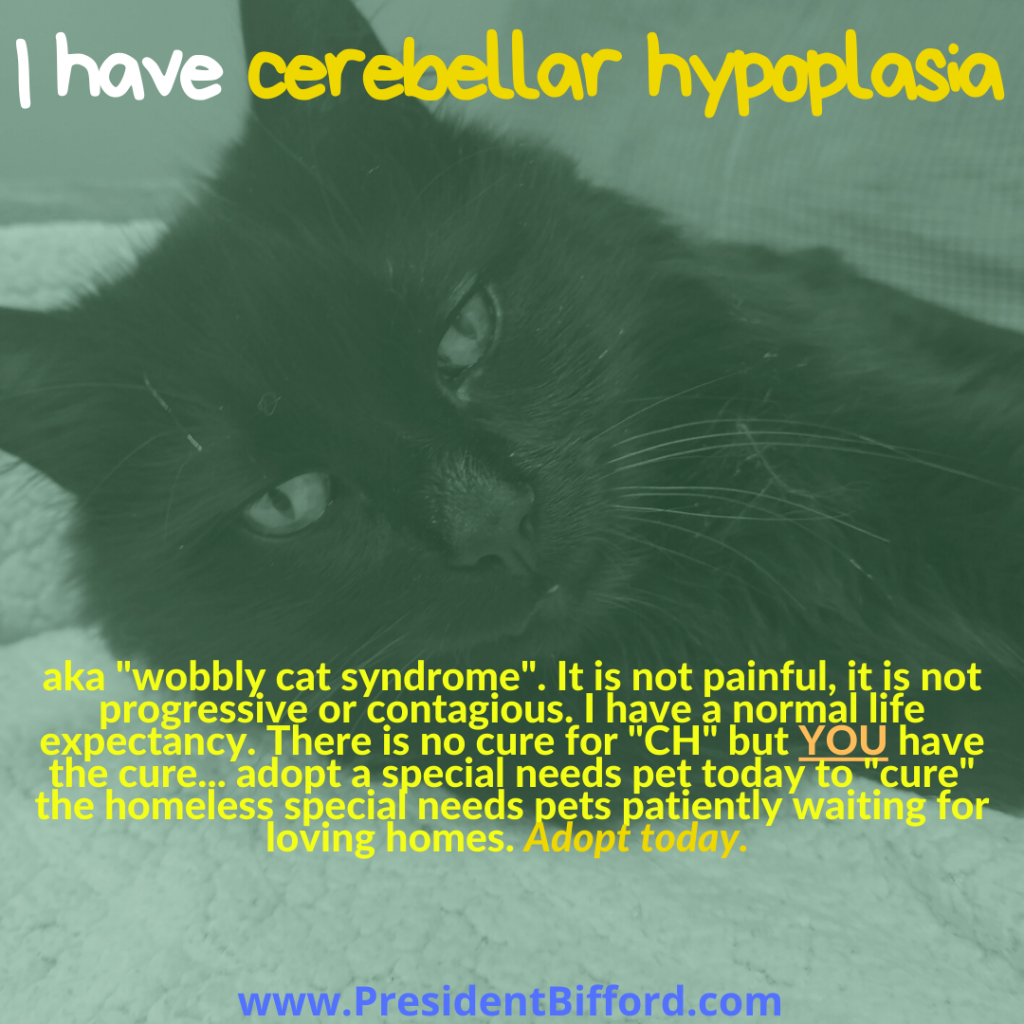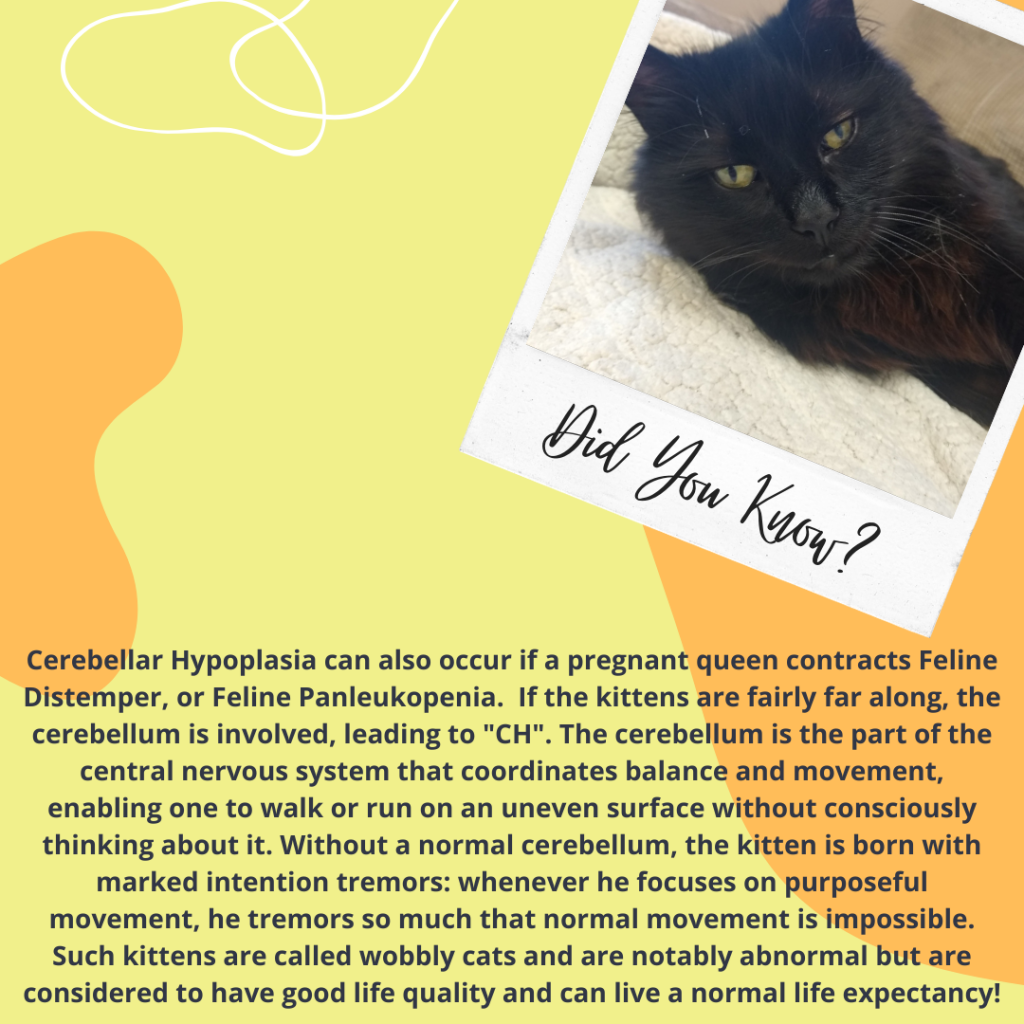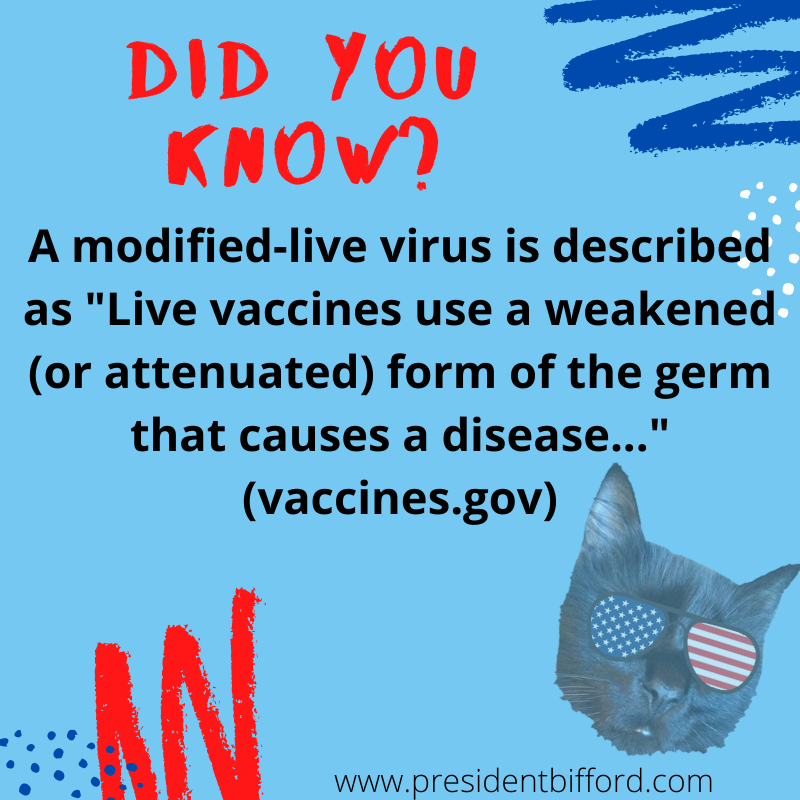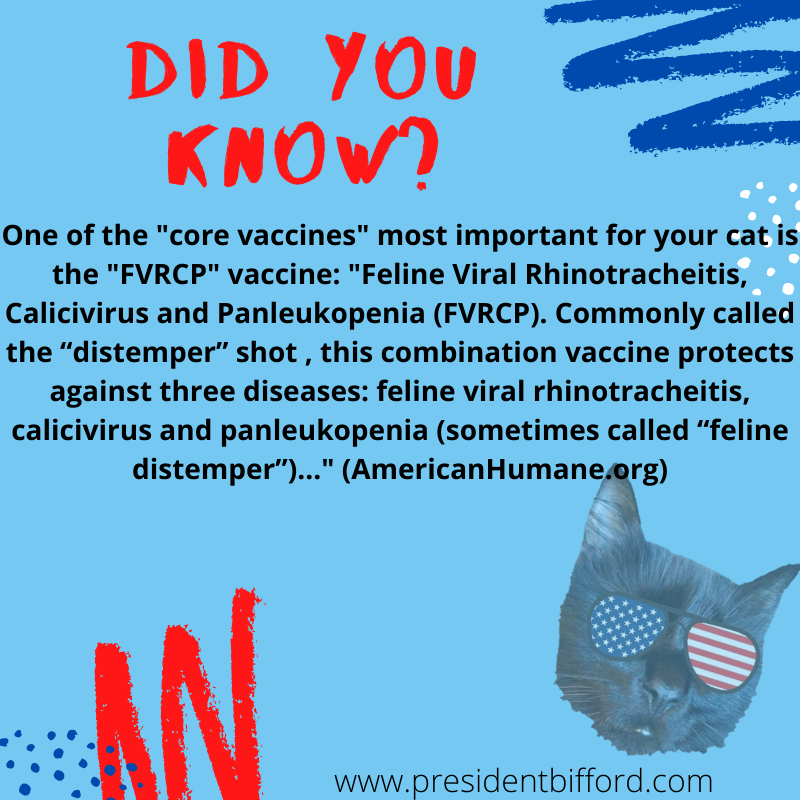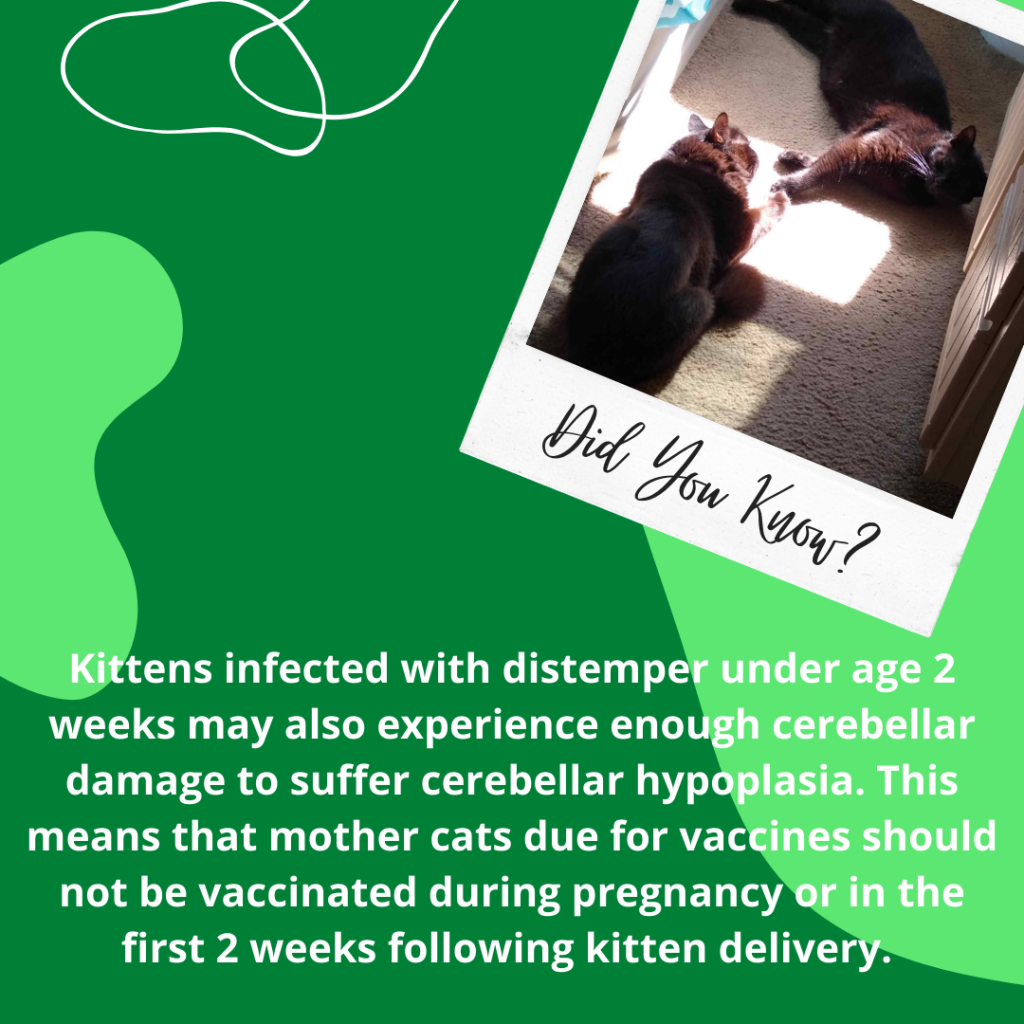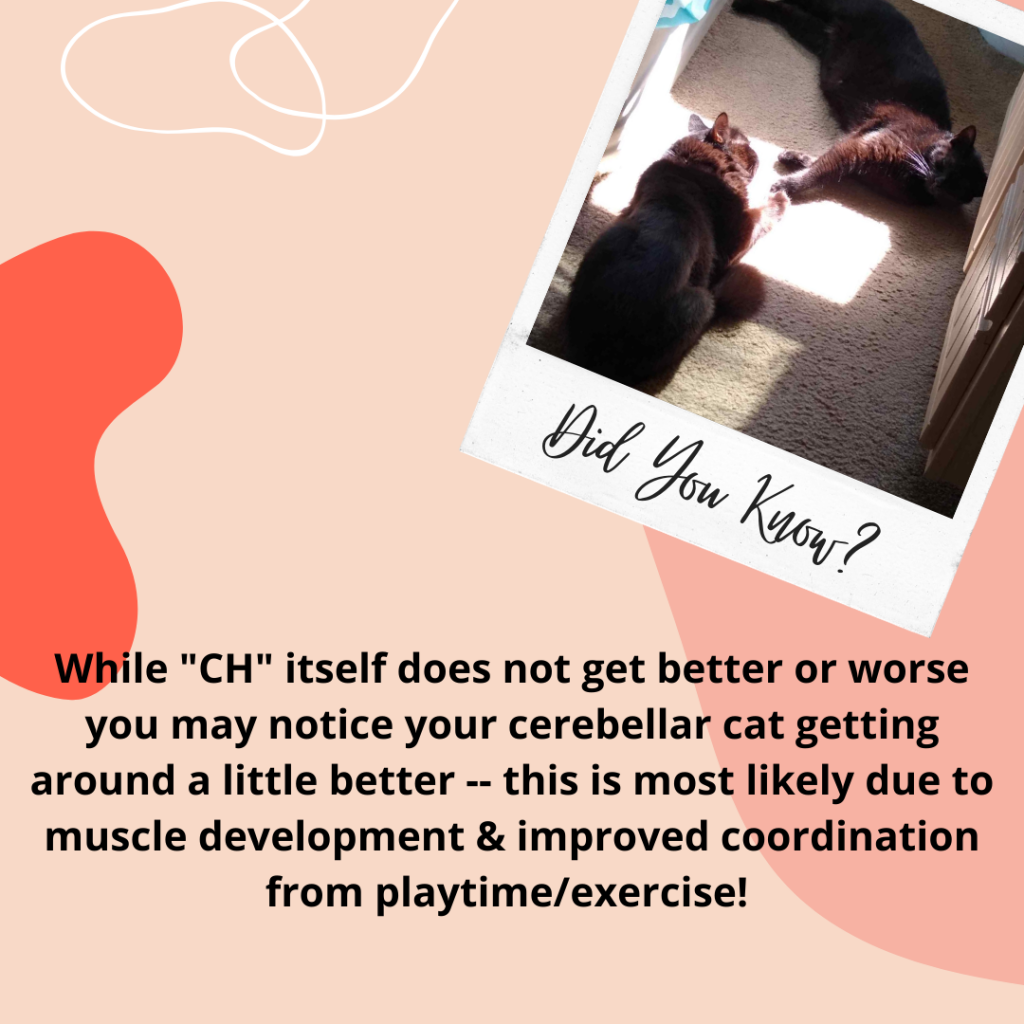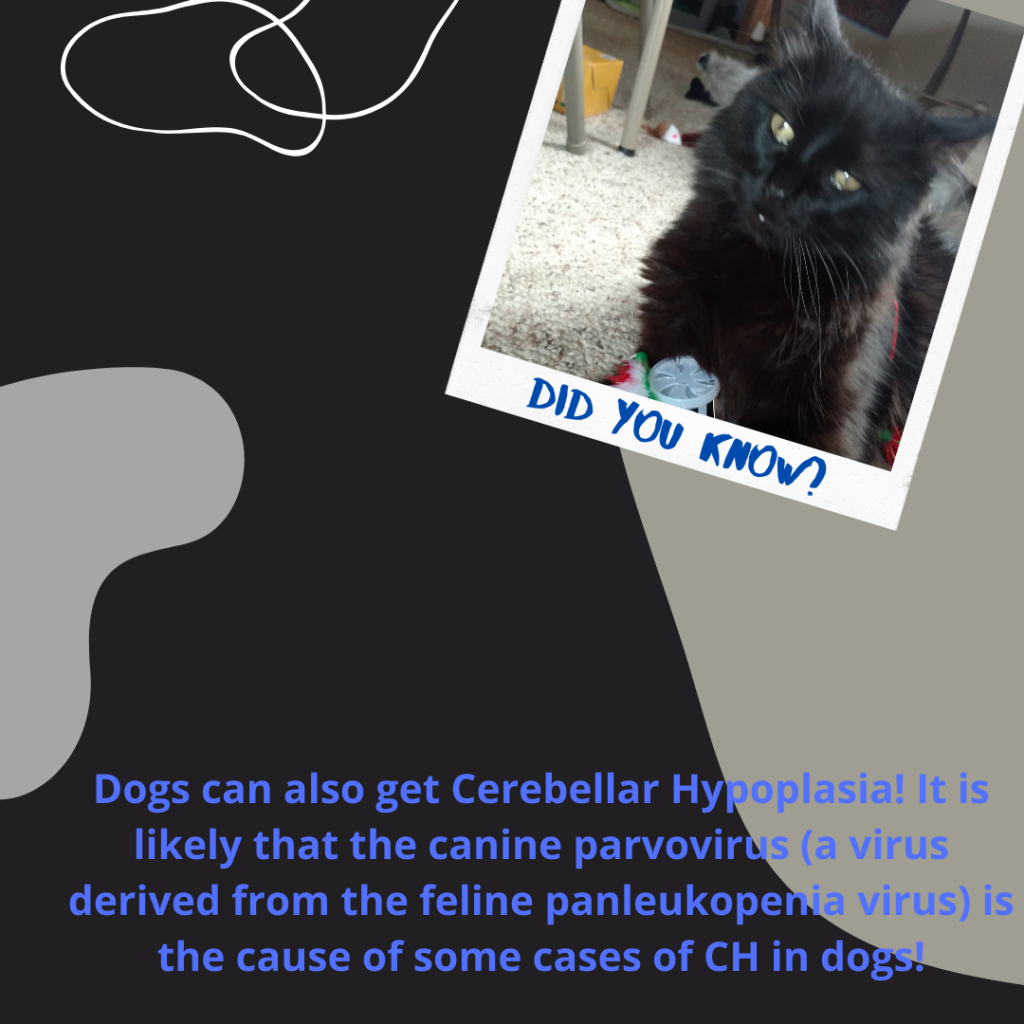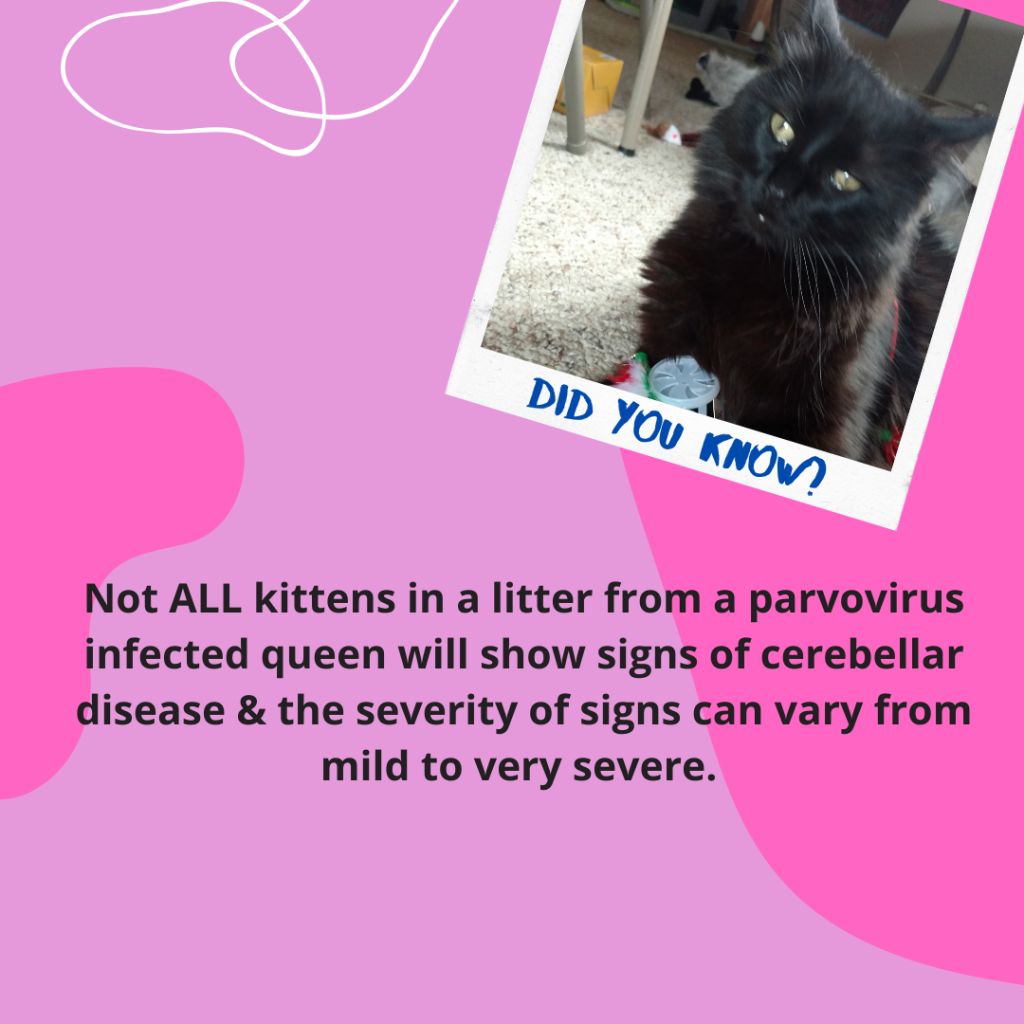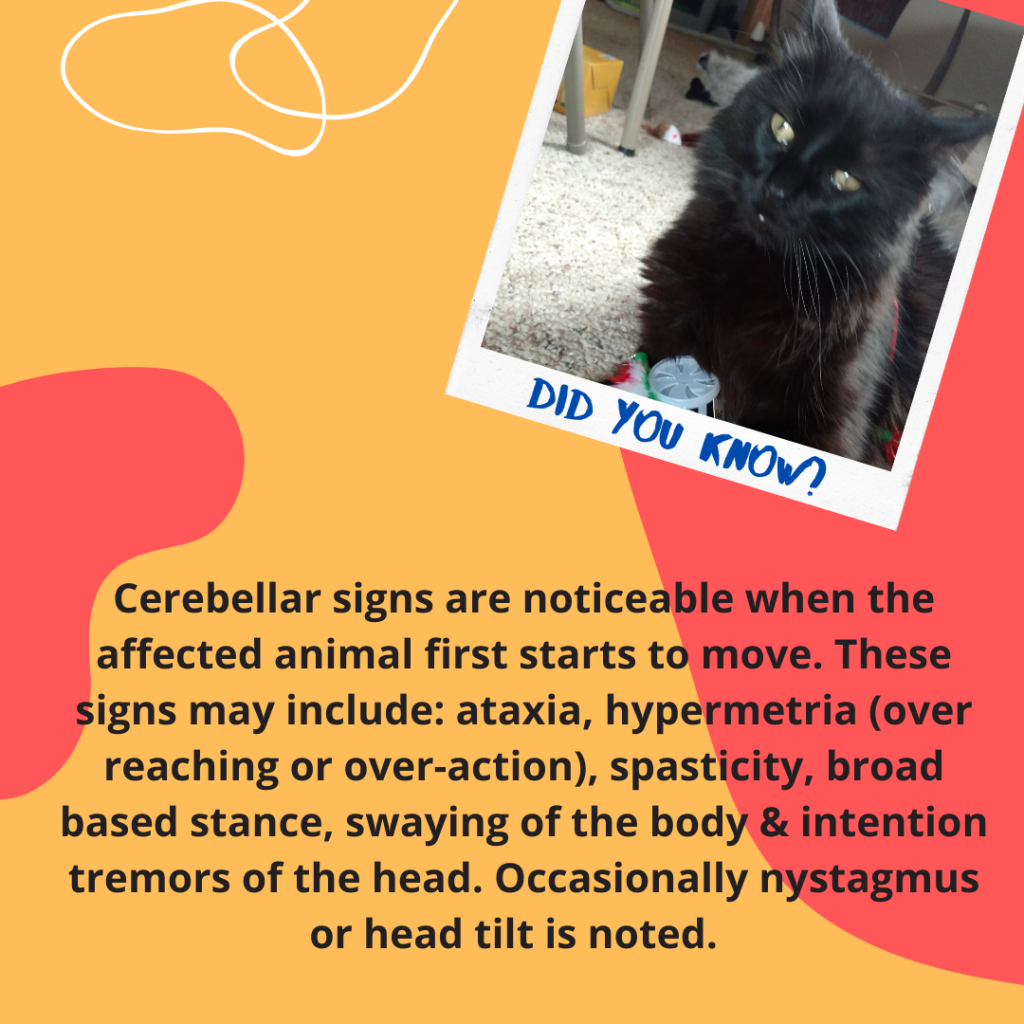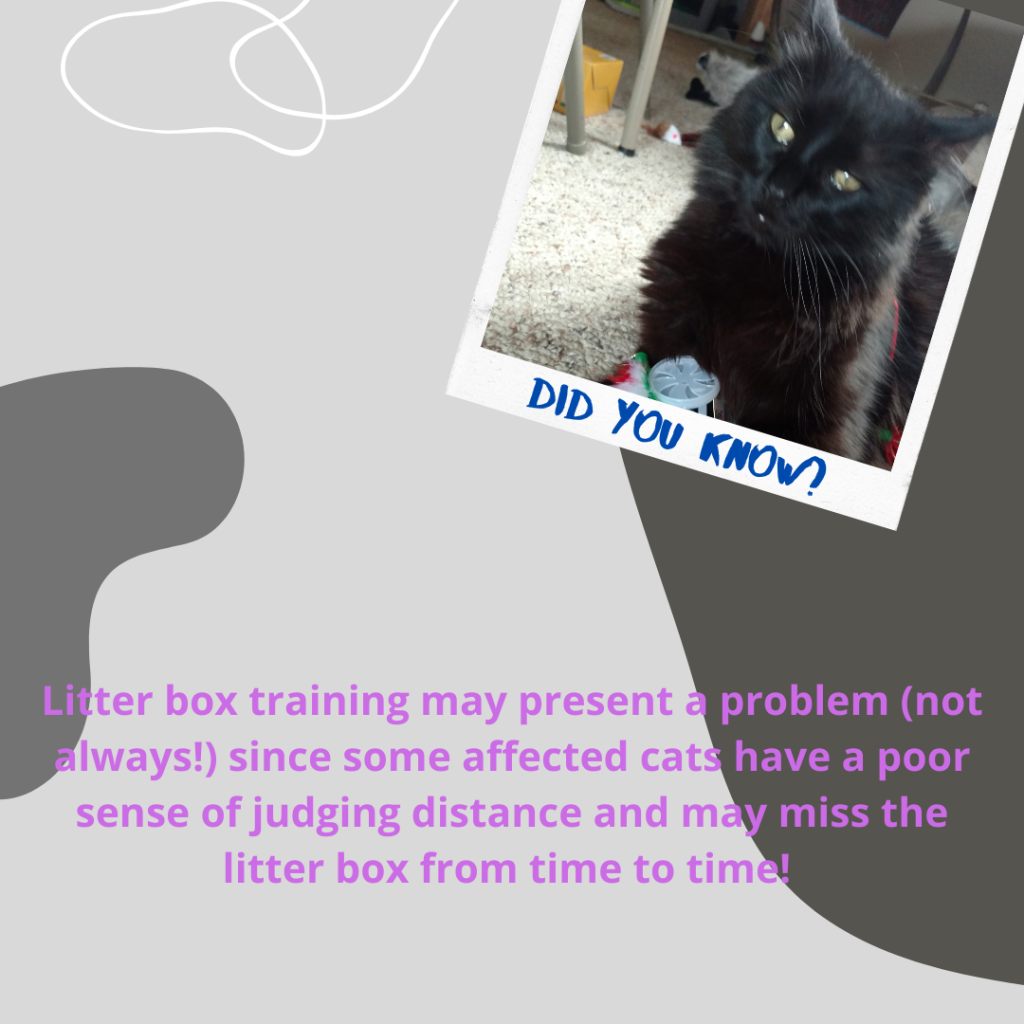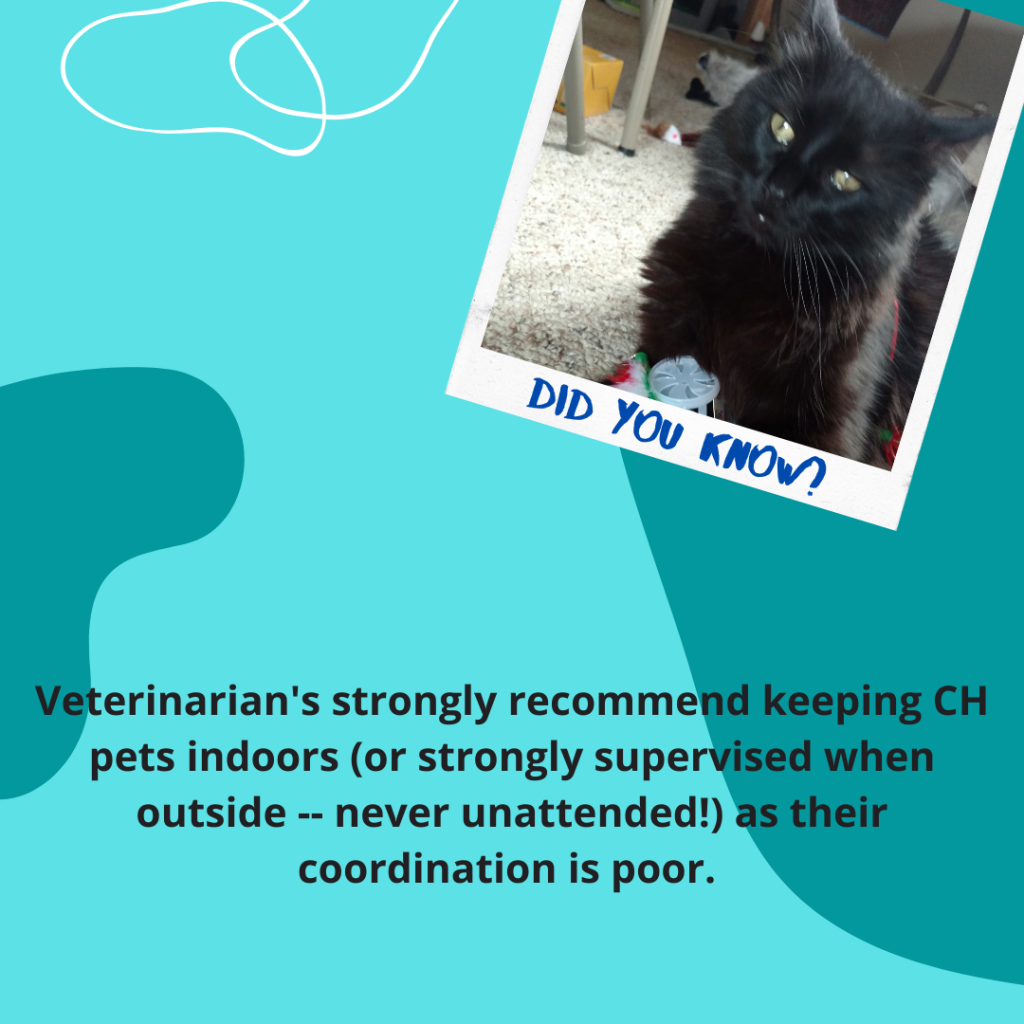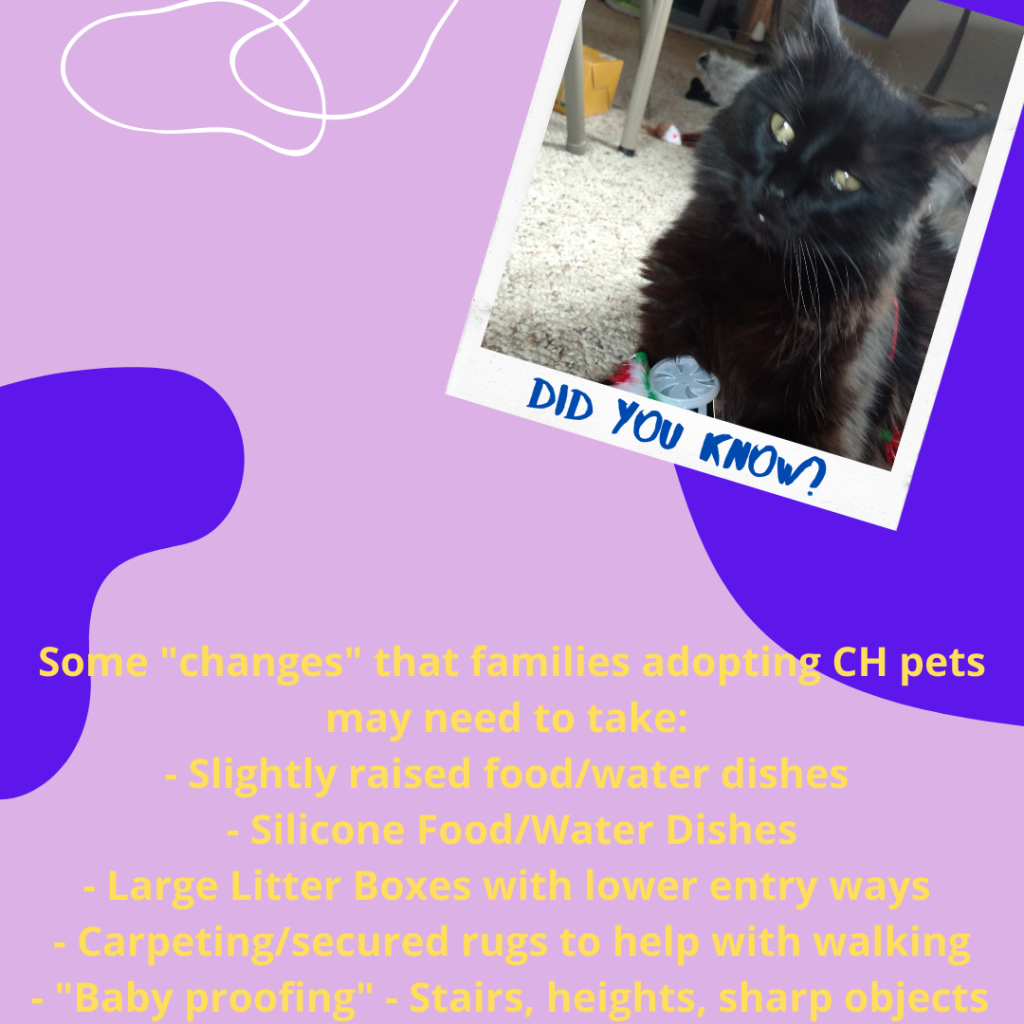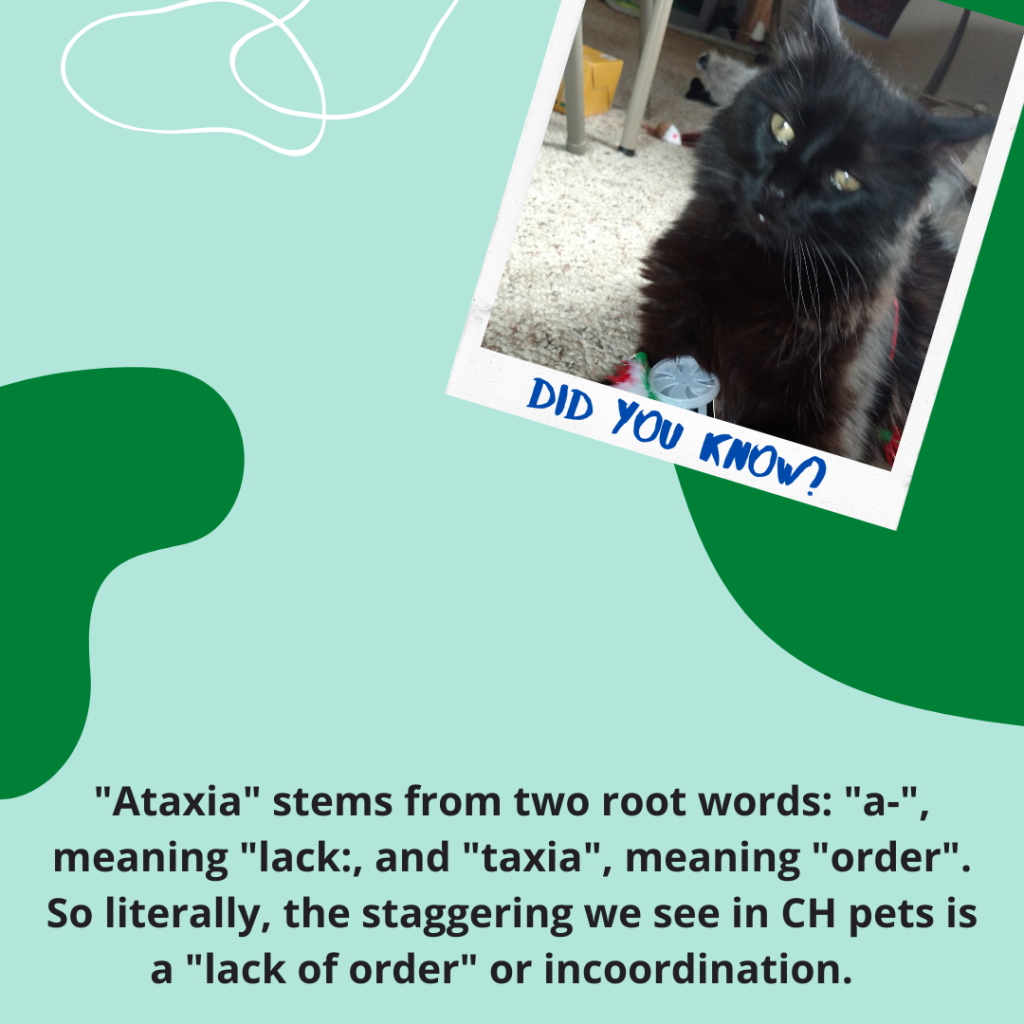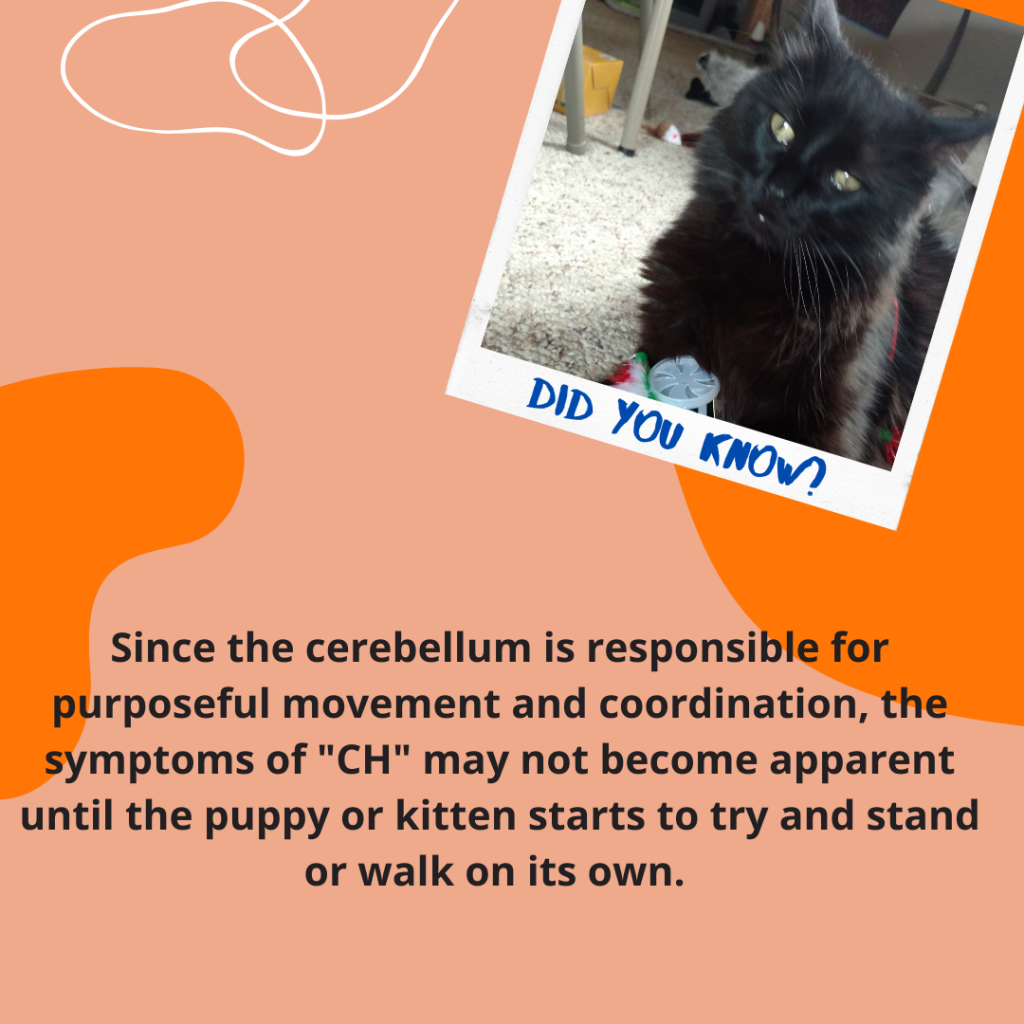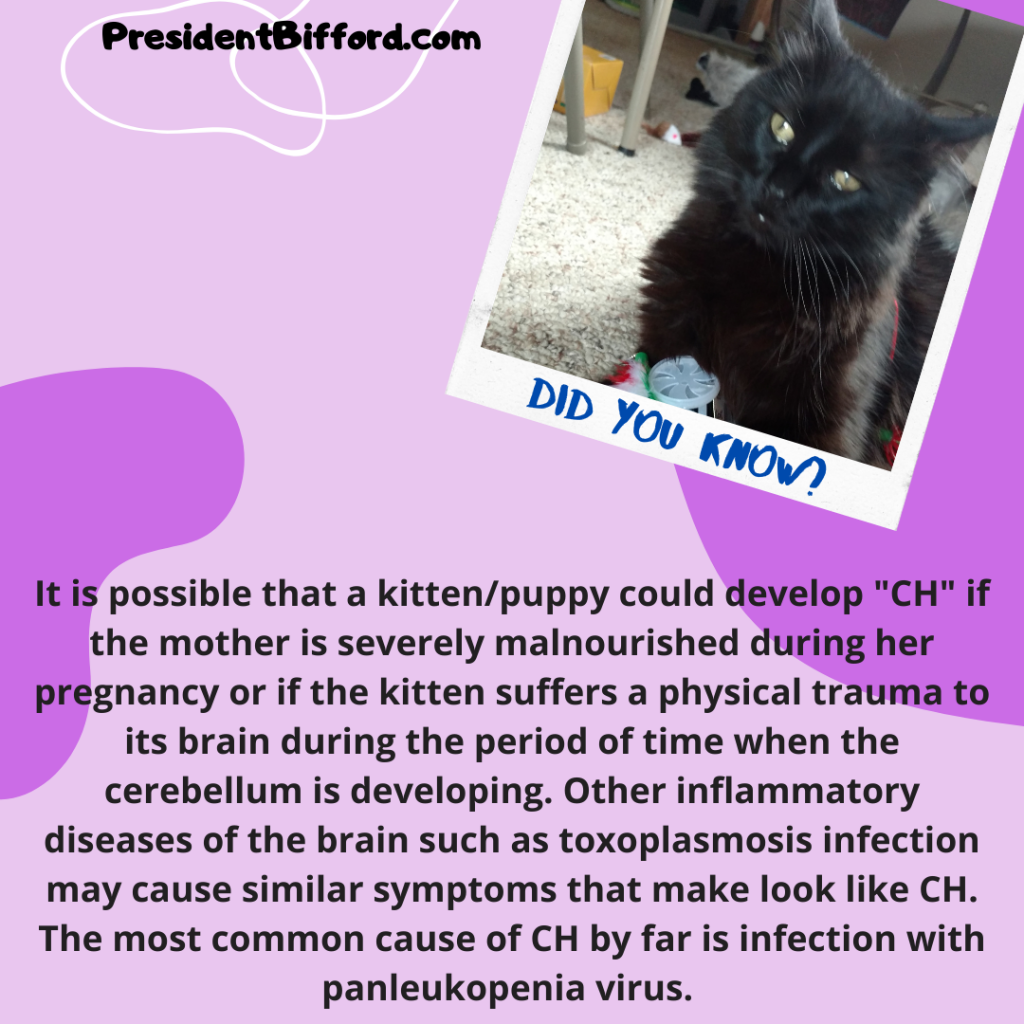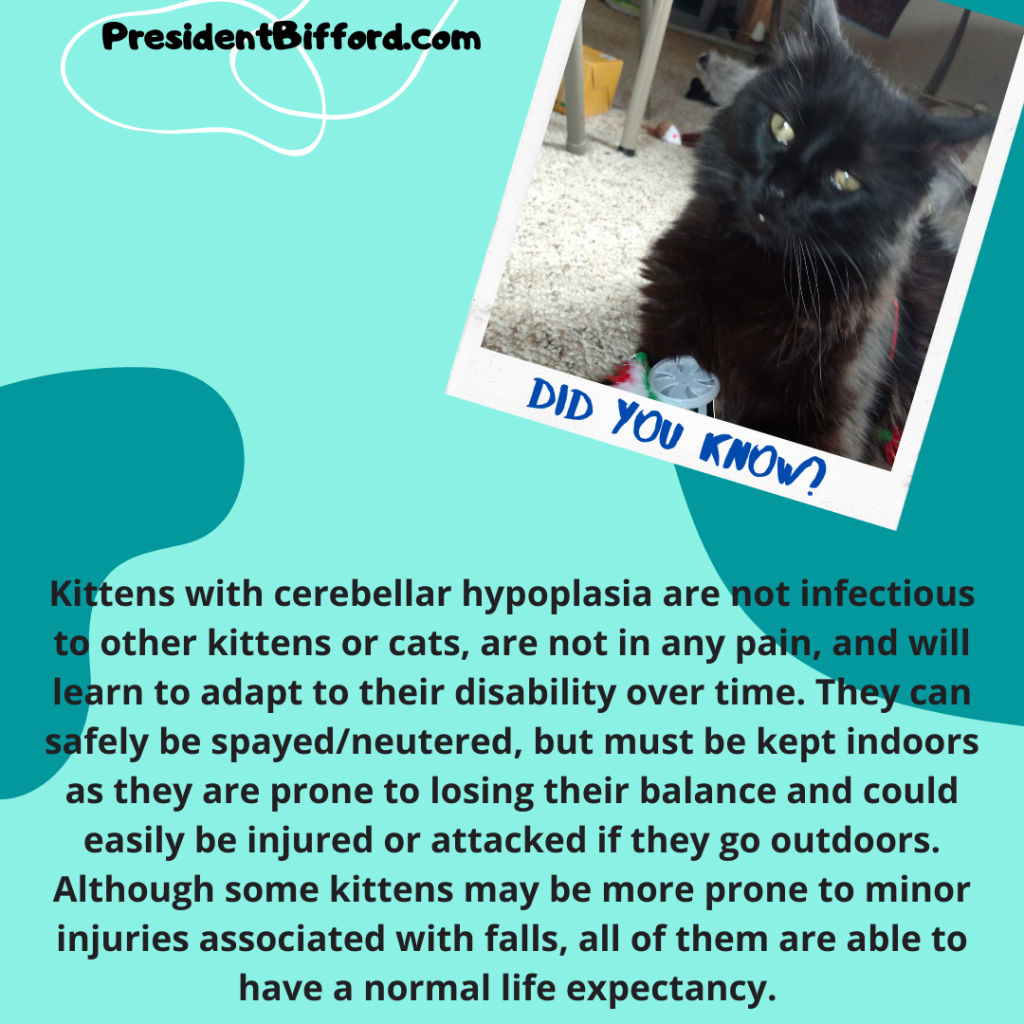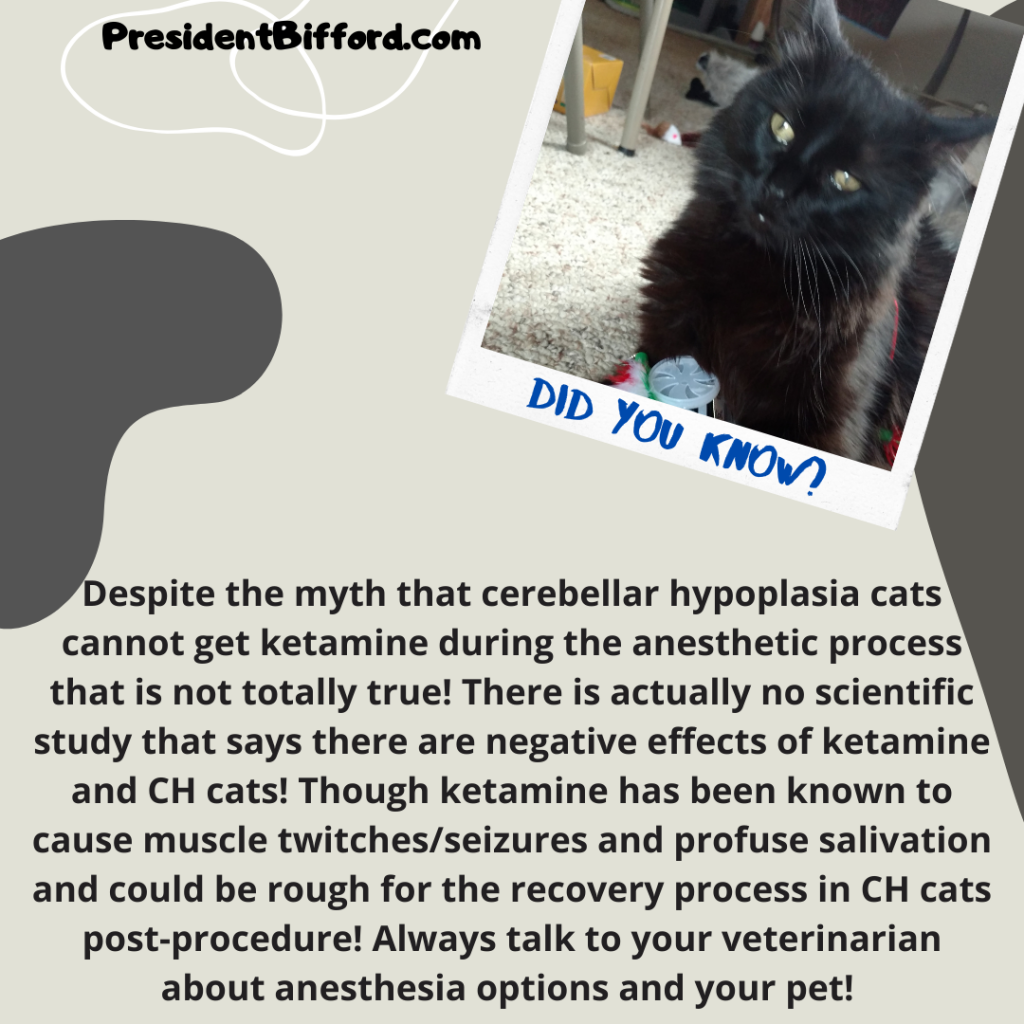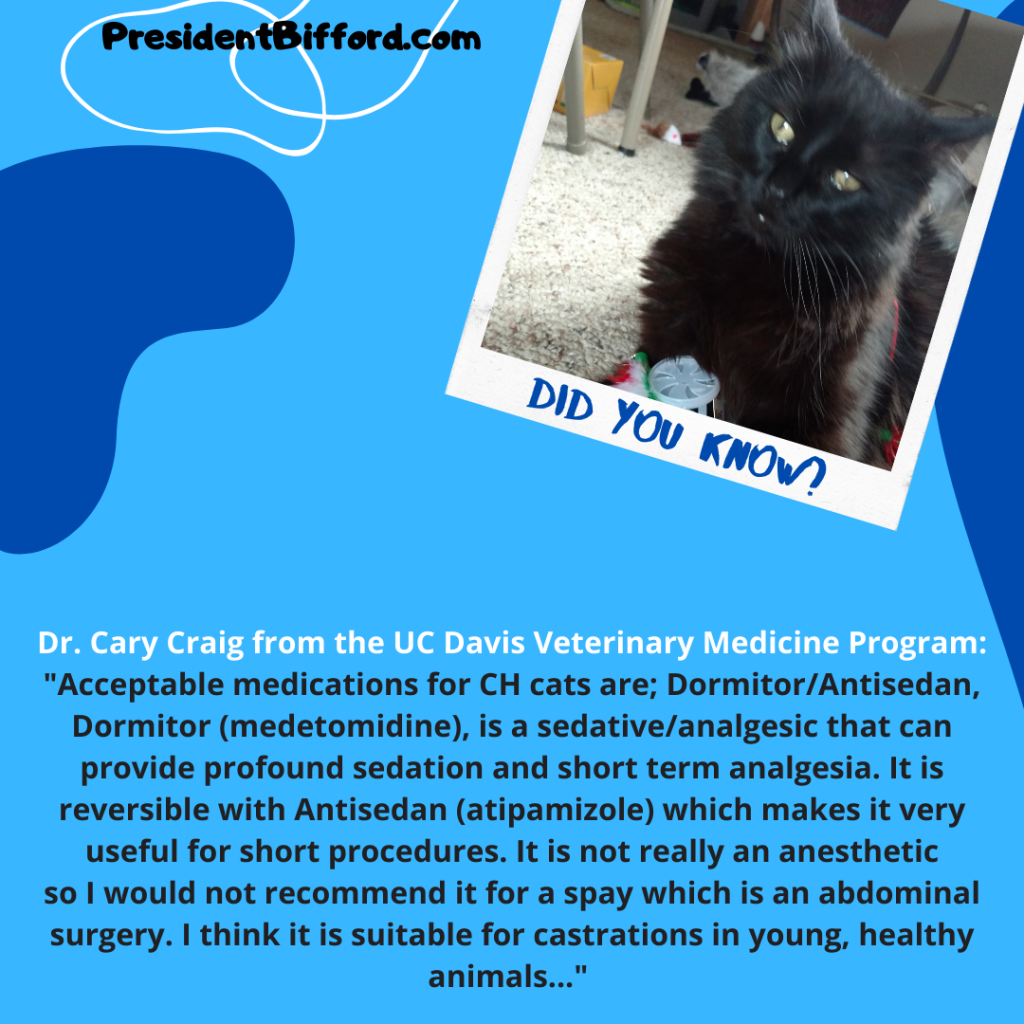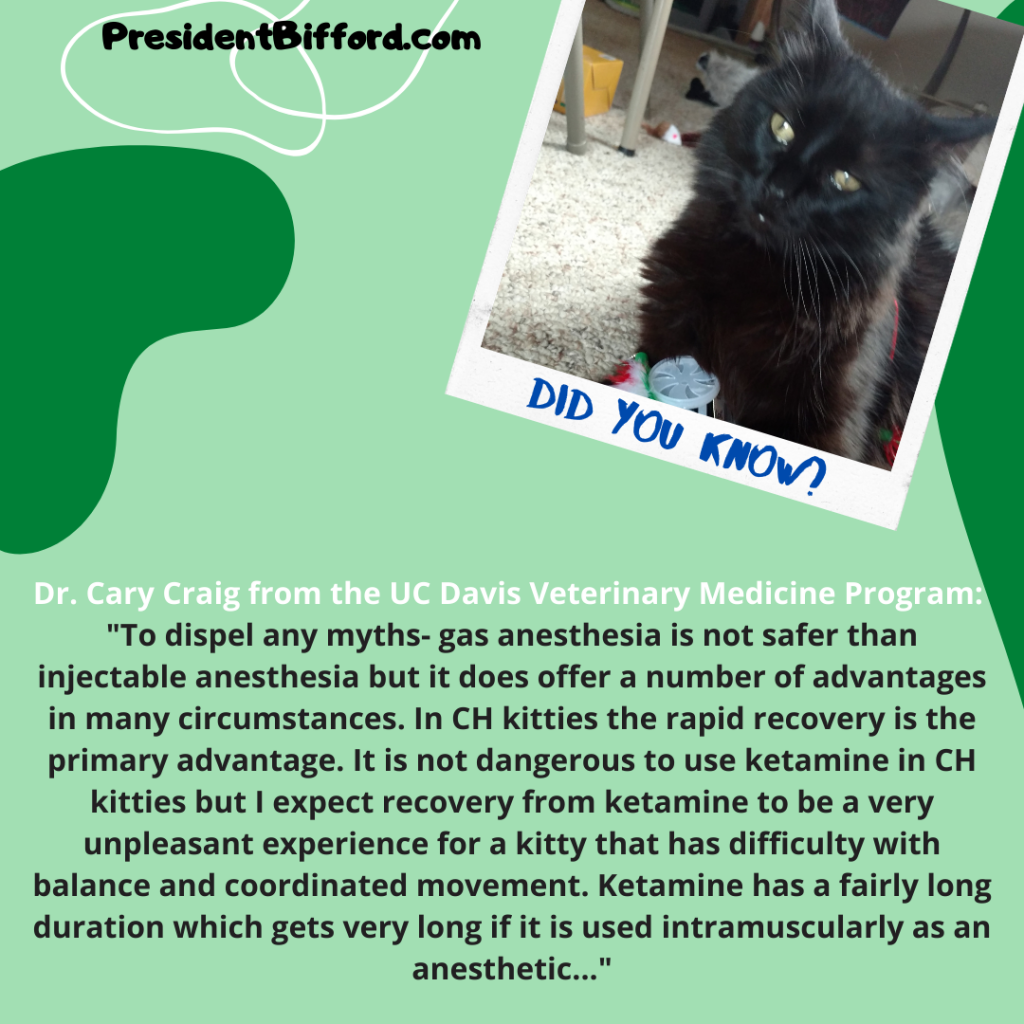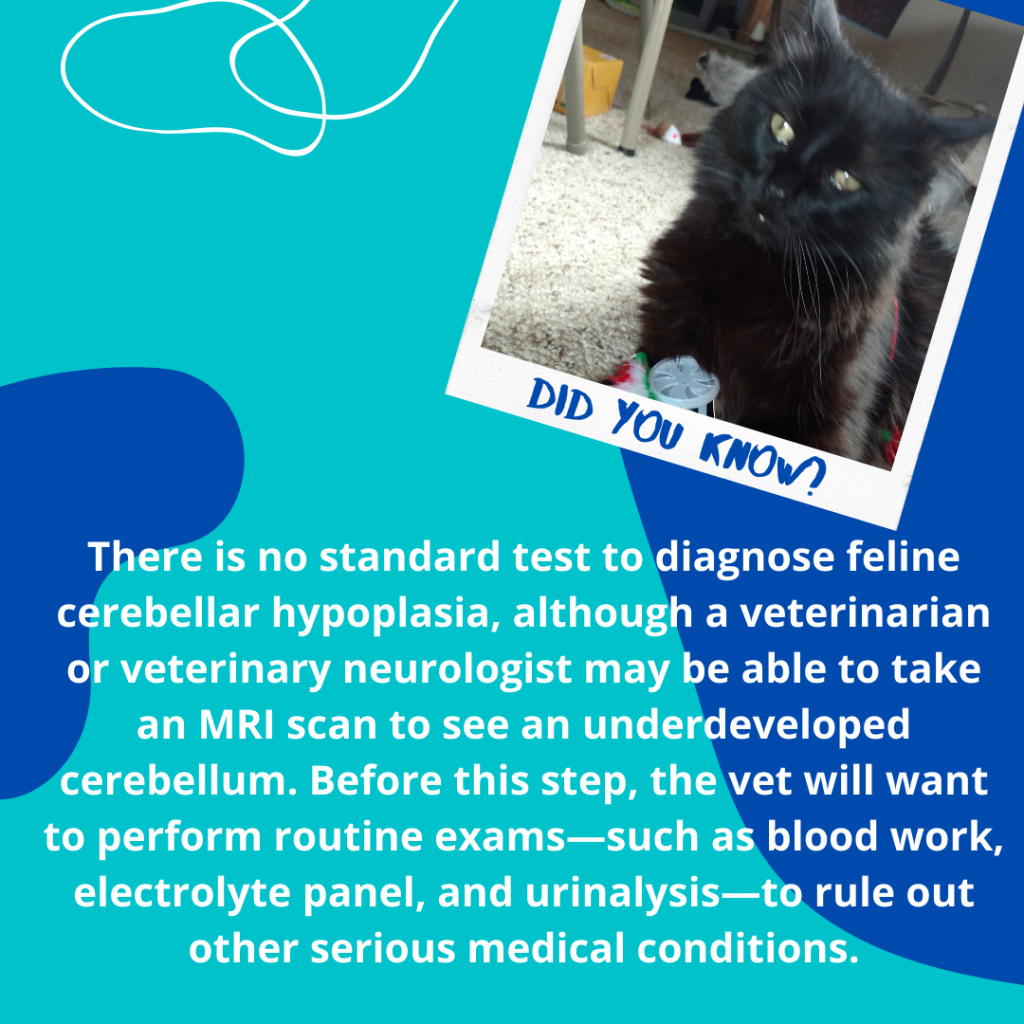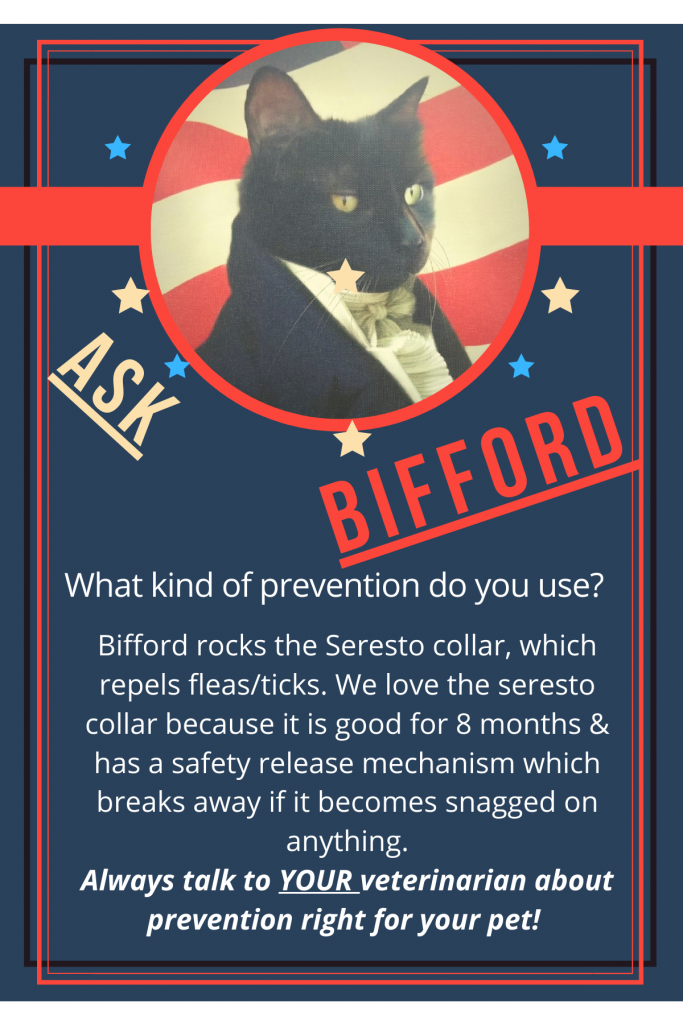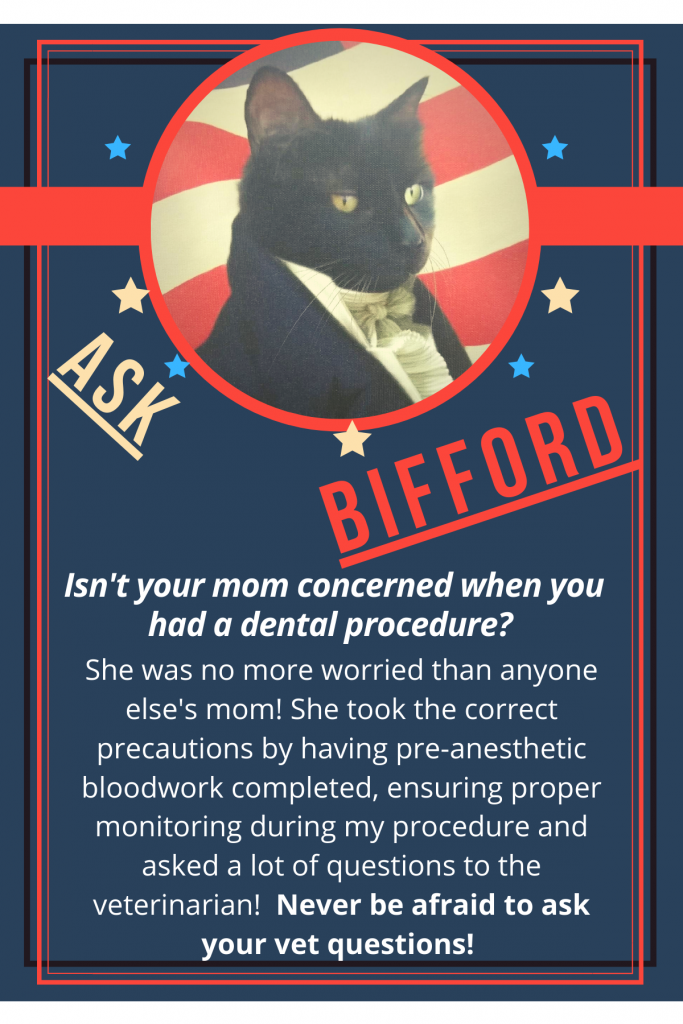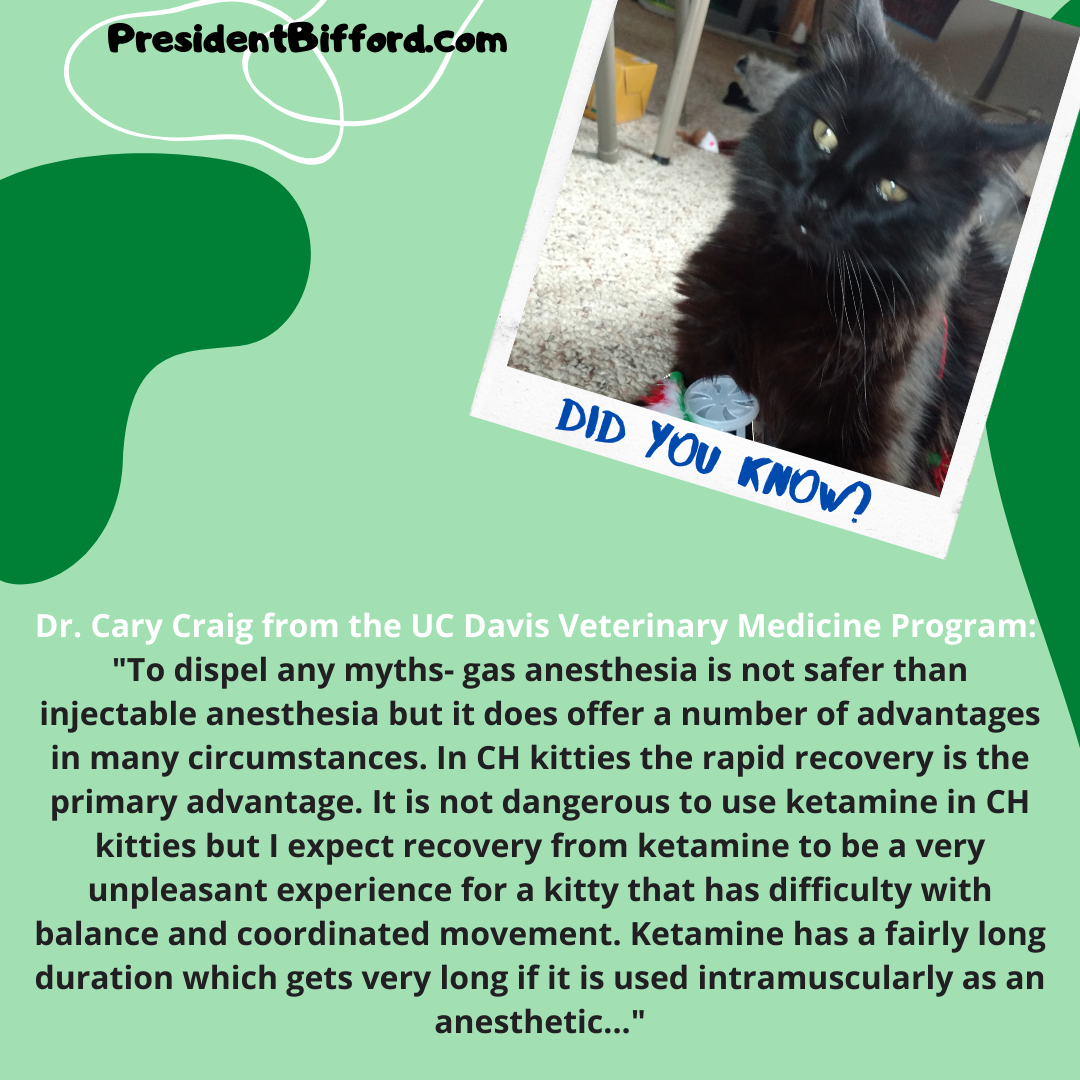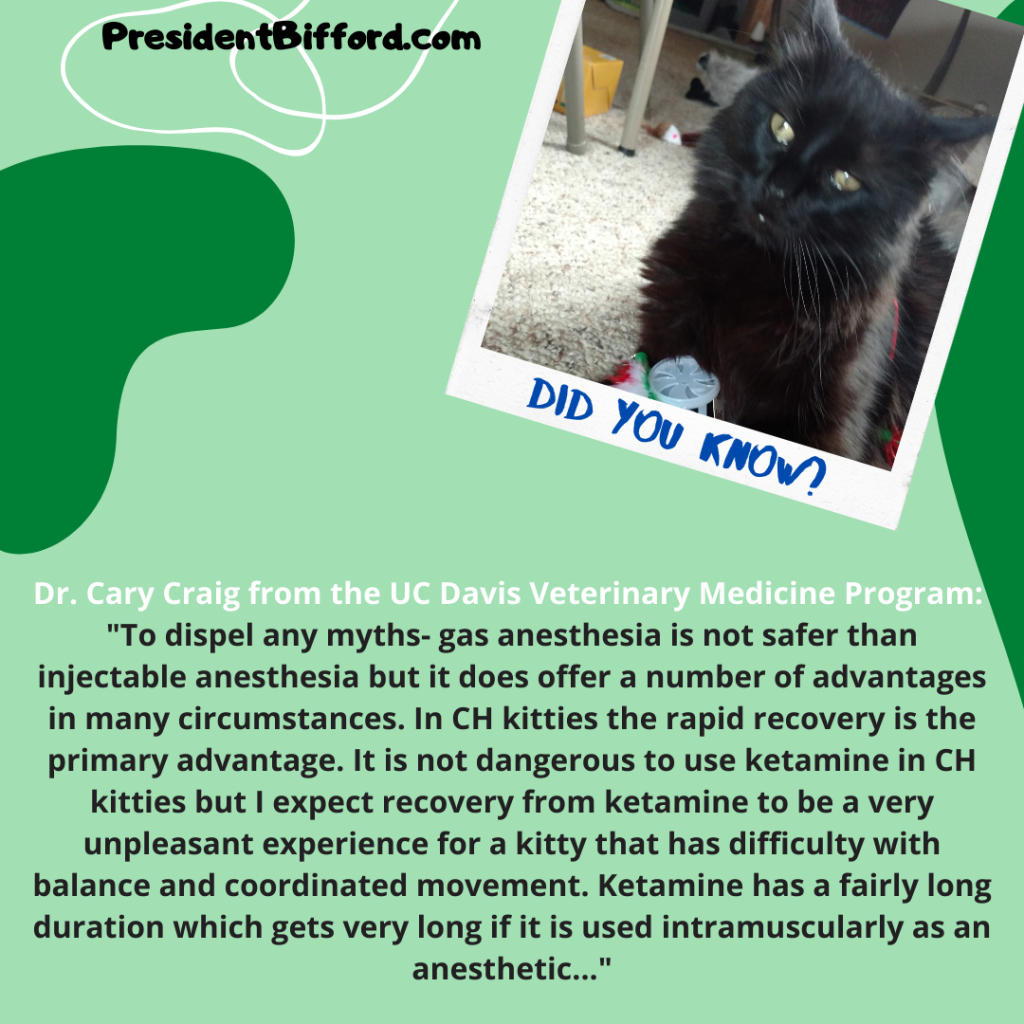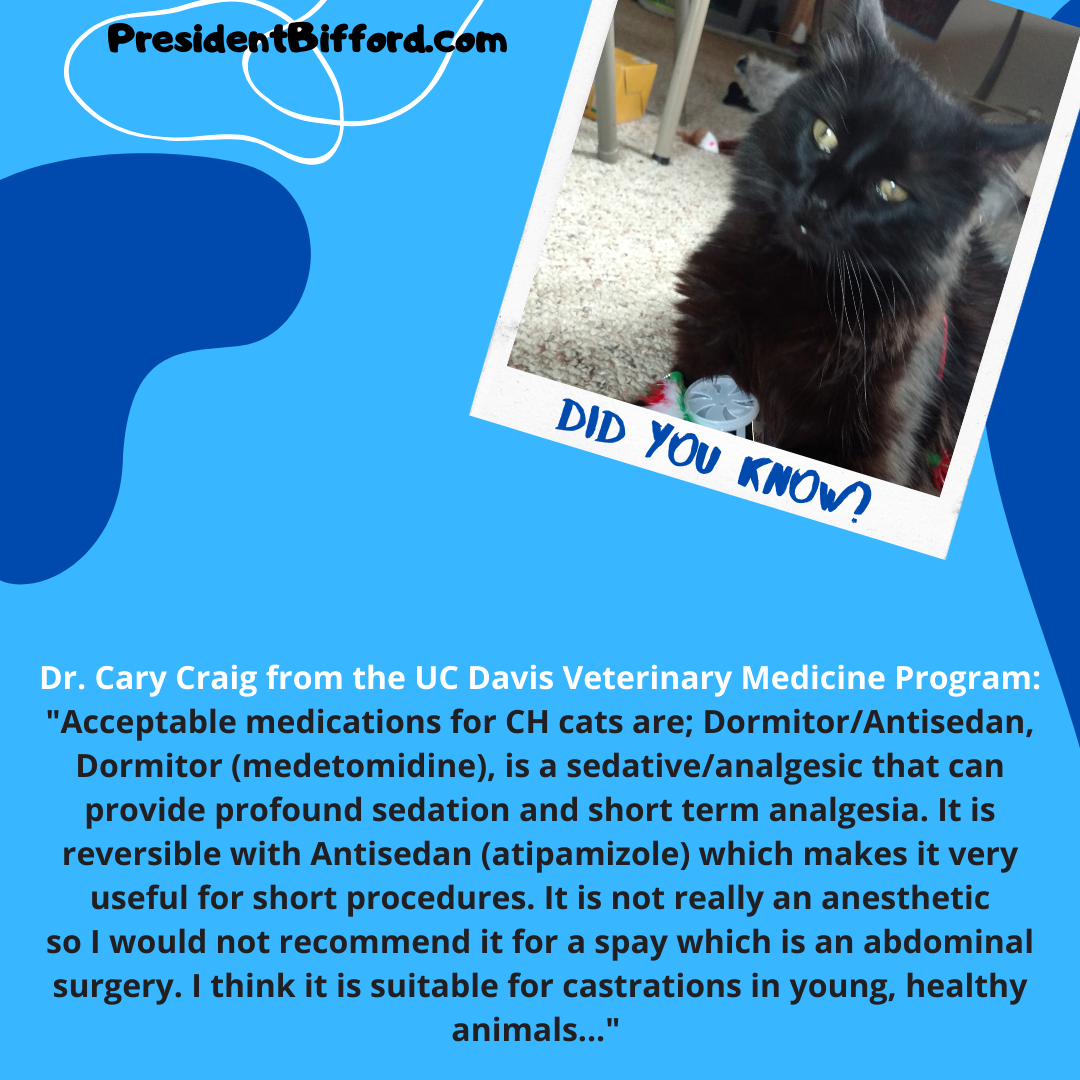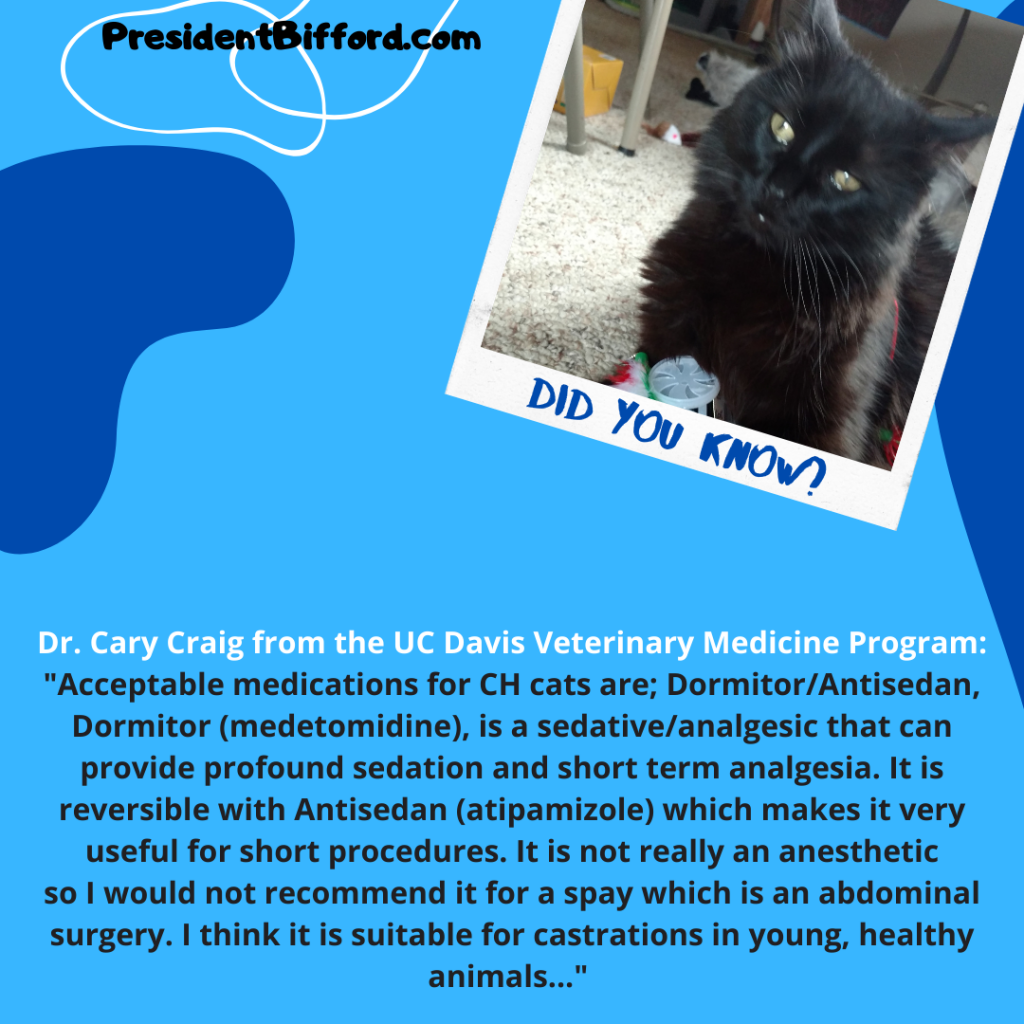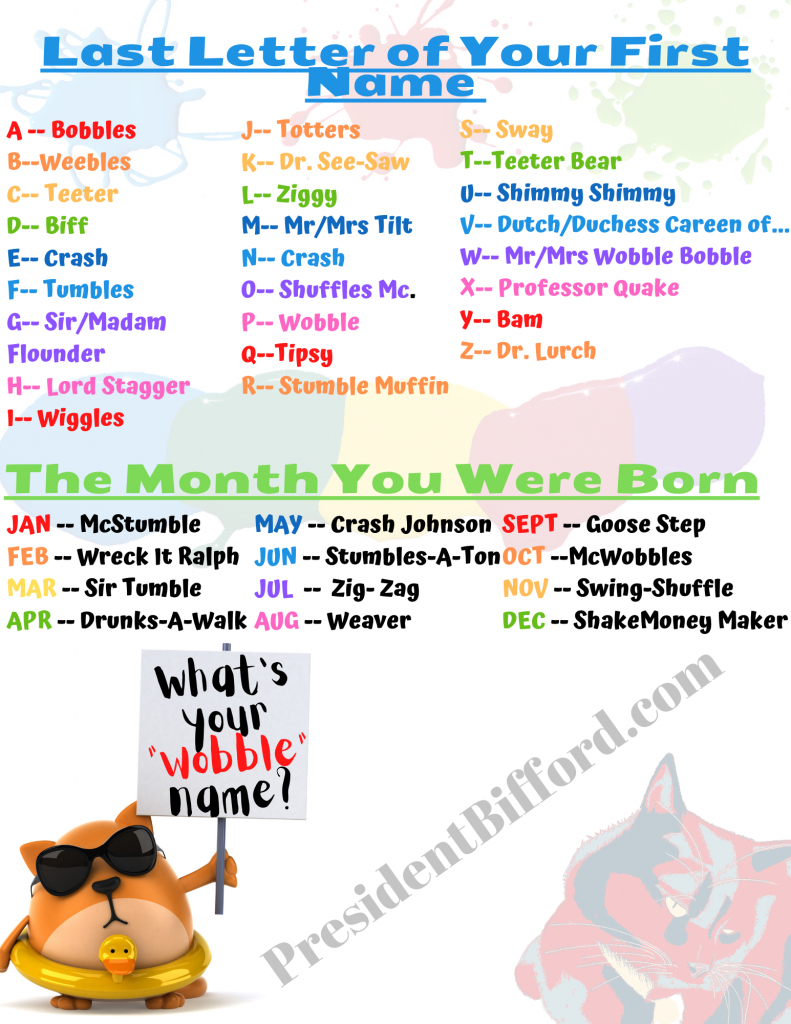“Four-On-The-Floor” Rule!
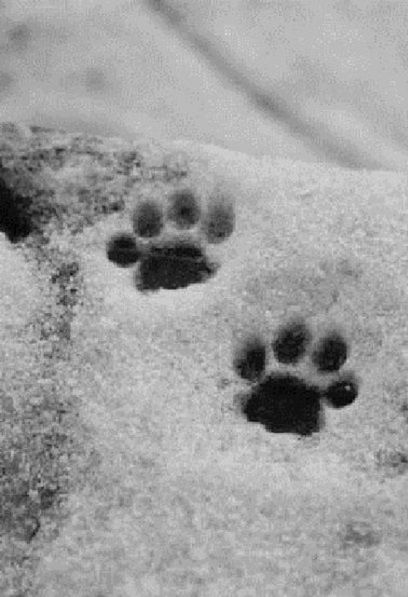
One of the “rules” that I heard upon adopting Bifford was “four-on-the-floor” and all I could think is “what the he!! does that even mean!?” But it makes sense when handling a cerebellar hypoplasia animal and one of the various ways you can ensure their safety!
Cat’s usually have no issues with landing on their feet when they jump down onto the floor but CH pet parents know that this is usually not the case with cerebellar hypoplasia animals.
The rule of thumb “four-on-the-floor” is an effective and friendly reminder to new pet parents, friends & family members to place a CH pet gently onto the ground while properly ensuring all four of their paws are planted firmly on the ground before letting go of them.
Note: This does NOT promise that they will not fall/stumble over but will help ensure they do not fall/stagger from a distance!
Most pet parents (or humans in general!) know that generally cats can jump from a distance onto the ground and land successfully on their feet without issue. This is NOT the case with cerebellar hypoplasia animals and if someone was to let a CH pet jump from a distance this could result in injury to your special baby (or injury to you attempting to catch a falling pet, get caught by a claw etc.!)
“Four-on-the-floor” is a safe, effective and cute way to remember that CH pets need a little assistance when being placed on the floor!
So remember to “PLANT THOSE PAWS” on the ground!
Did You Know?
Did You Know?
What’s YOUR “CH” Name?
Pet Insurance & CH Pets
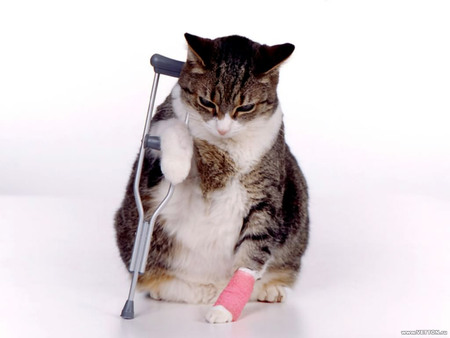
We have received lots of messages pertaining to cerebellar hypoplasia pets & pet insurance and unfortunately we have not been able to find a pet insurance that would cover “CH” pets! Below is listed a chart courtesy of DVM360 that shows the top pet insurance companies and breaks down the “dirty details” of each insurance company.
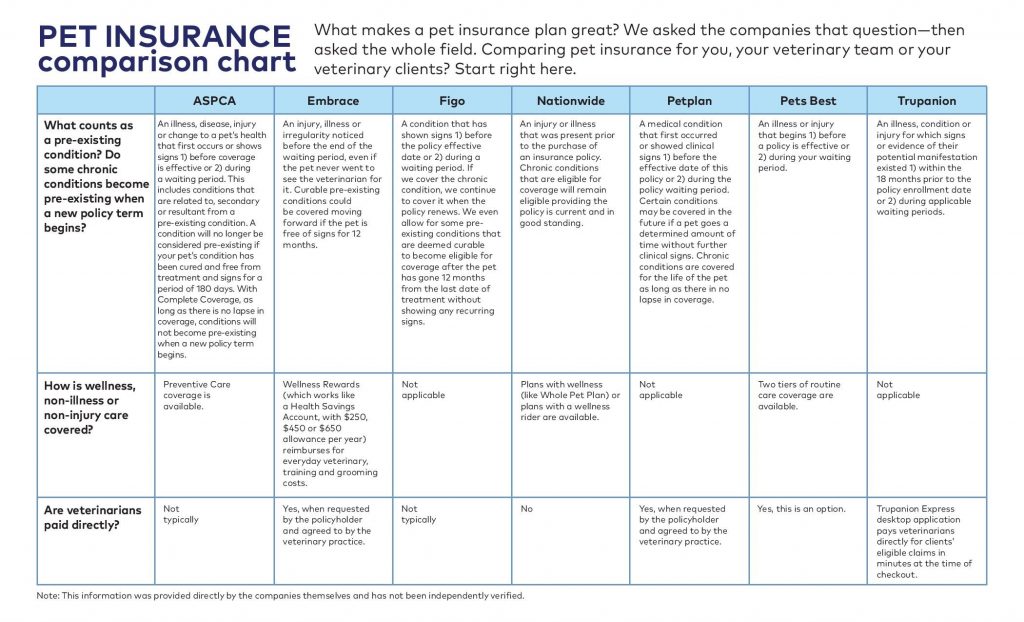

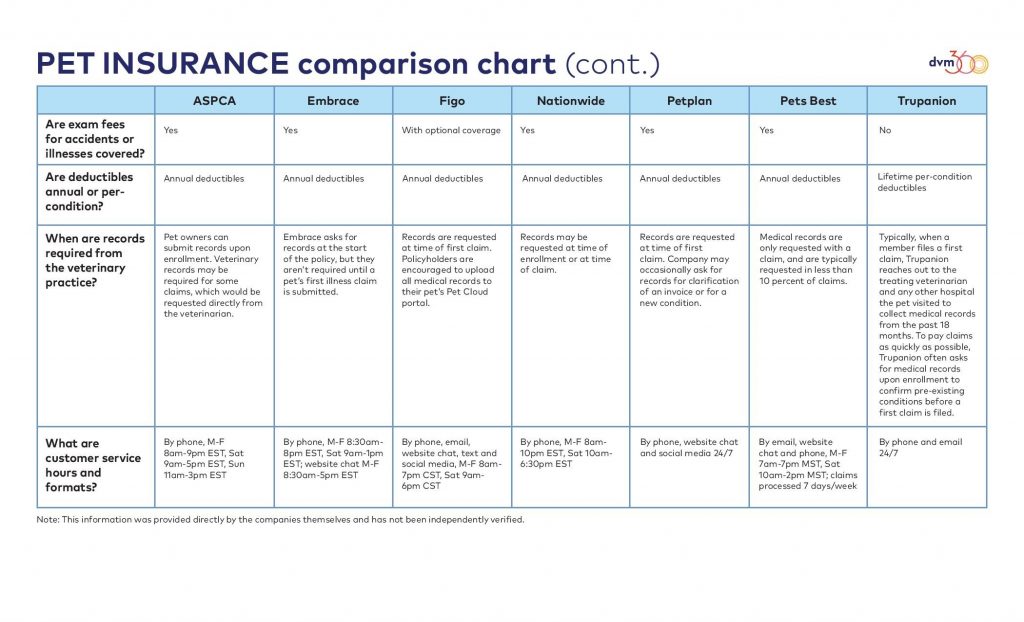
Upon speaking to one of the pet insurance companies “Figo Pet Insurance” I kindly asked them to specify their “pre-existing policy” and how this pertains to cerebellar hypoplasia pets.
“Cerebellar hypoplasia will be considered a pre-existing condition even though the pet is born with it unless it happens to not show signs or symptoms until after the pet has a policy. The earliest you can insure a pet is 8 weeks old and we have a 14 day waiting period for illnesses. In order for the cerebellar hypoplasia to be covered, there would need to not be any signs or symptoms until the pet was at least 10 weeks old…”
I then asked Figo Pet insurance about “accidents or illnesses” [Figo Pet Insurance states that you can still get pet insurance for a CH pet BUT any illnesses/injuries that could be related to CH would NOT be covered by pet insurance] so I asked them to clarify that.
“We base all coverage off of the medical records your veterinarian provides. With CH the coverage will heavily depend on if your veterinarian feels the accident or illness is related to the CH. For example, if your vet states “CH caused pet to fall over and break tooth” it would be considered due to a pre-existing condition. If your vet states that there is a broken tooth and does not consider it due to the pre-existing CH then it could be covered
We could also offer coverage for other accidents or illnesses that your vet deems unrelated to the CH like urinary issues, allergies, diabetes, or cancers…”
So the jury is still out on pet insurance! In our opinion we feel that the pet insurance companies will try to connect any injury/illness to CH (thus the pet insurance not covering the bill for!) so personally we feel it is not worth having your CH baby on pet insurance but always stress to do your homework! If you are looking into insurance for your CH pet contact them directly and ask questions pertaining strictly to cerebellar hypoplasia!
We recommend looking into Care Credit (www.carecredit.com) which is sort of like a credit card that you can only use at the veterinarian’s office (or you can personally use it also! I recently used my care credit at the dentist office!)

